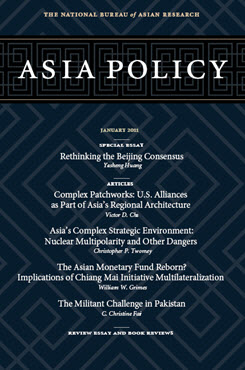The Militant Challenge in Pakistan
This article examines Pakistan’s use of asymmetric warfare as an instrument of foreign policy toward India since 1947 and in Afghanistan since the 1960s.
EXECUTIVE SUMMARY
MAIN ARGUMENT
Pakistan’s use of asymmetric warfare, although dating back to 1947, did not aggressively expand beyond Kashmir until Islamabad acquired first a covert “existential” nuclear capability in the 1980s and later an overt nuclear capability in 1998. After describing the complex contemporary landscape of Islamist militancy in Pakistan and the relationship between these groups and the state, as well as between religious and political organizations, this article contends that jihad is sustained by important segments of Pakistani society that endorse “militant jihad” in general and specific militant groups and operations in particular. Given Pakistan’s enduring security concerns about India’s ascent, Islamabad is unlikely to abandon militancy as a tool of policy, even while the government battles former proxies who have turned their guns—and suicide vests—on the Pakistani state and their former patrons.
POLICY IMPLICATIONS
- Pakistan’s skill in recasting the historical record in its favor enables the country to extract benefits from the U.S., which seeks to prove that it is a reliable ally.
- Given the varying levels of support for militancy within both the Pakistani public and the military and intelligence agencies, Islamabad likely will be unwilling to abandon militancy as a tool of foreign policy and contend with the emergent militant threat ravaging Pakistan and the region.
- Washington and its partners have been unable to either fundamentally change the way Pakistan assesses its cost-benefit calculus toward India or find some means of ameliorating Pakistan’s neuralgic fears of India. Years of U.S. policies toward Pakistan based on financial allurements and conventional weaponry have done little to induce change.
- Given Pakistan’s regional equities and the changing regional dynamics, the international community should abandon optimism that Pakistan can or will change course and should prepare for increasing Islamist violence in the region and beyond.
About Asia Policy
Asia Policy is a peer-reviewed scholarly journal presenting policy-relevant academic research on the Asia-Pacific that draws clear and concise conclusions useful to today’s policymakers. Asia Policy is published quarterly in January, April, July, and October and accepts submissions on a rolling basis. Learn more


